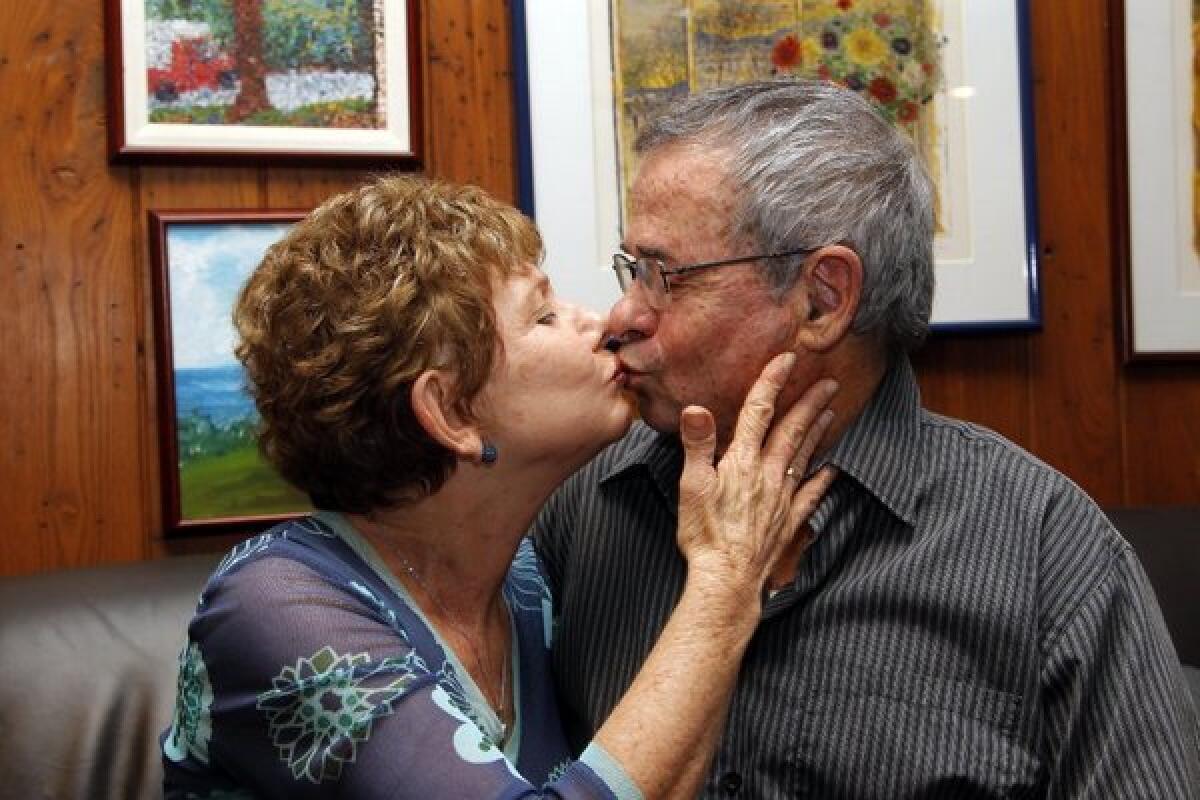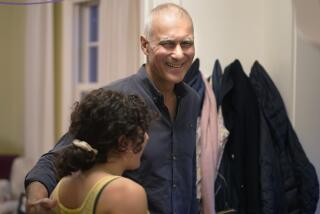USC’s Nobel Prize-winning chemist credits curiosity, simplicity

- Share via
USC chemistry professor Arieh Warshel can thank curiosity and weak computers for the Nobel prize in chemistry he won Wednesday.
To figure out the blazingly fast chemical ballet performed by the body’s proteins, Warshel had to form questions that could easily be handled by the limited power of computers developed in the 1970s.
He kept his method simple even as computers – and his field of computational chemistry – evolved. At 2 a.m. Wednesday, it paid off with a long-distance call from Stockholm and a voice telling him he would share science’s top honor with Michael Levitt of Stanford and Martin Karplus of Harvard.
“First, I checked that they were talking in a Swedish accent, to be sure it is not a trap, then I was very happy,” said Warshel, who took all of 26 seconds to publicly accept the honor in front of a crowd of journalists at the USC campus Wednesday.
It was the second Nobel in chemistry in as many decades for USC – organic chemist George A. Olah won in 1994 – and punctuated the emergence of the university, famed more for its athletic accomplishments, as a heralded research institution.
Wry and self-effacing, Warshel, 72, appeared to be a man out of his element. He arrived 15 minutes late for the festivities – the Nobel does not get you through traffic on the 10 freeway, but USC President C.L. Max Nikias informed him that it does merit a free reserved parking space on campus for life, plus a refund of this year’s parking fees.
Warshel nervously knocked his microphone askew several times and apologized for not having PowerPoint slides to explain exactly what he did to deserve the world’s top honor in science.
What Warshel and his laboratory colleagues did was develop computer models that meld subatomic chemistry, which is governed by quantum mechanics, with the Newtonian world that governs the larger-scale action of protein molecules. He is widely acknowledged as a founder of computational chemistry, a field that has struggled for acceptance among some experimental chemists, who demean the role of model-based research.
Warshel managed to describe his work to Israeli Prime Minister Benjamin Netanyahu in less than a minute, and did the same for the reporters gathered in the Town and Gown Ballroom. (Warshel studied at the Israel Institute of Technology and Weizmann Institute of Science before immigrating to the U.S.)
“Netanyahu said that he did not think he would understand it, so I gave him a one-minute lecture; he understood it, and he says that from now on he will propose his ministers say what they want just in one minute,” Warshel said.
At least one person in the audience, which included Warshel’s students, was unsatisfied with the professor’s humility.
“Dad? Can you explain how your methods can be used to develop drugs for, say HIV, or cancer patients?” asked Yael Warshel.
The computer model, Warshel explained, can predict ways to “outsmart” a virus that mutates in response to drugs.
Asked what he would do with the “very large” monetary award ($1.2 million will be shared among three laureates), he said, “First, it is not large at all; second, I don’t know if it is taxable.”
“It is, Professor Warshel,” advised Olah, recipient of the Nobel for his work with carbon ions, who was seated in the front row.
“We came to USC about the same time and we did the bulk of our work here,” Olah noted. “USC, in these 37 years, changed drastically. We became a major research university which also has great interest and success in collegiate sports.”
Asked what made him persevere, even as his field struggled for recognition, Warshel said, “I had nothing else to do.”







